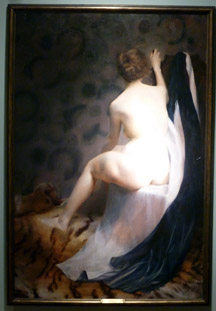Camille Claudel was a trained sculptor who became a student of Auguste Rodin and eventually his model and his lover.
After an abortion she broke off from a romantic association but stayed in his atelier for a while. Her life was difficult in many ways. She became erratic in her behavior and began destroying some of her work. Her paranoia eventually yielded to schizophrenia and she accused Rodin of stealing her ideas.
Paul Claudel, the poet, was her younger brother, but he was reluctant to help her.
The portrait above in marble was executed by one of Rodin’s technicians and when Rodin saw the technician about to add a collar to the bust, he stopped him and said that the bust was perfect as it was.
This sculpture was exhibited at the Rodin show in Montreal in 2015. Rodin did many portraits of Camille Claudel, but this seems to me to be the most evocative and touching.



